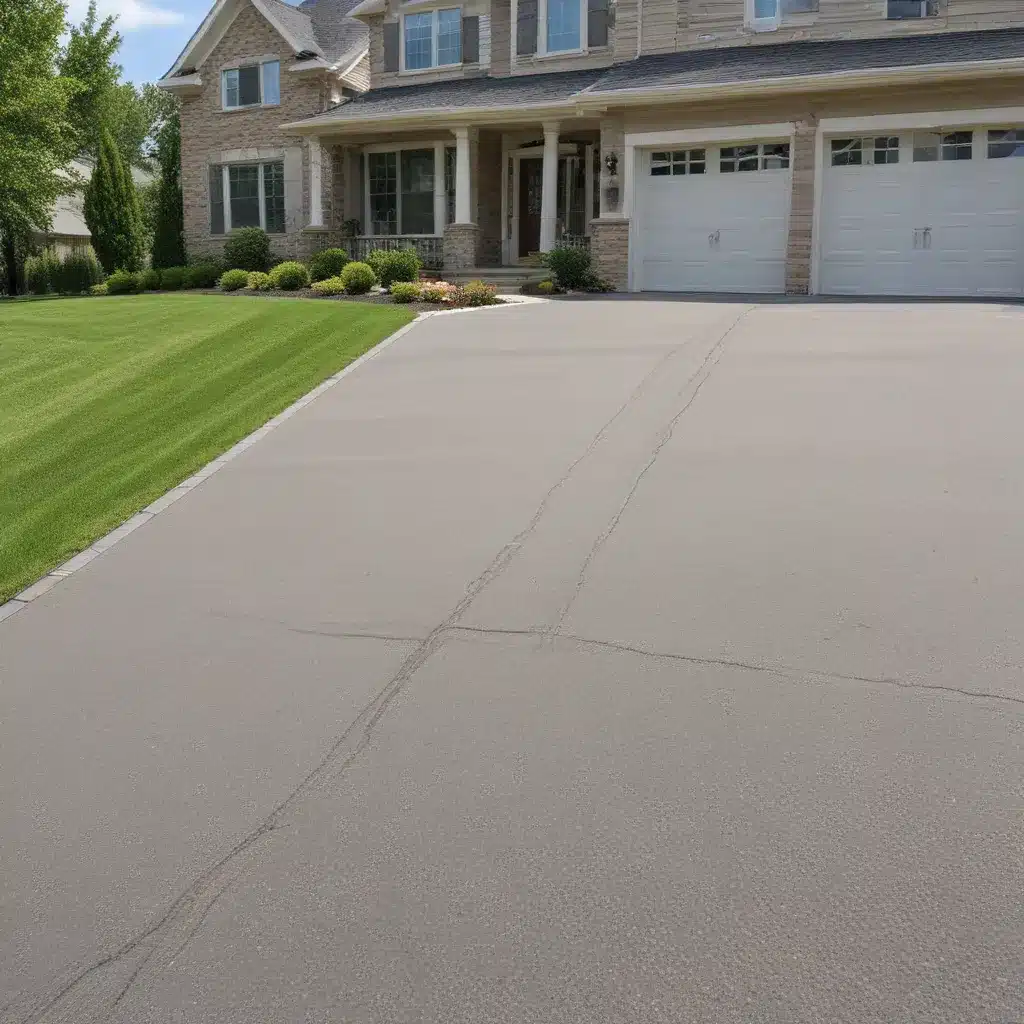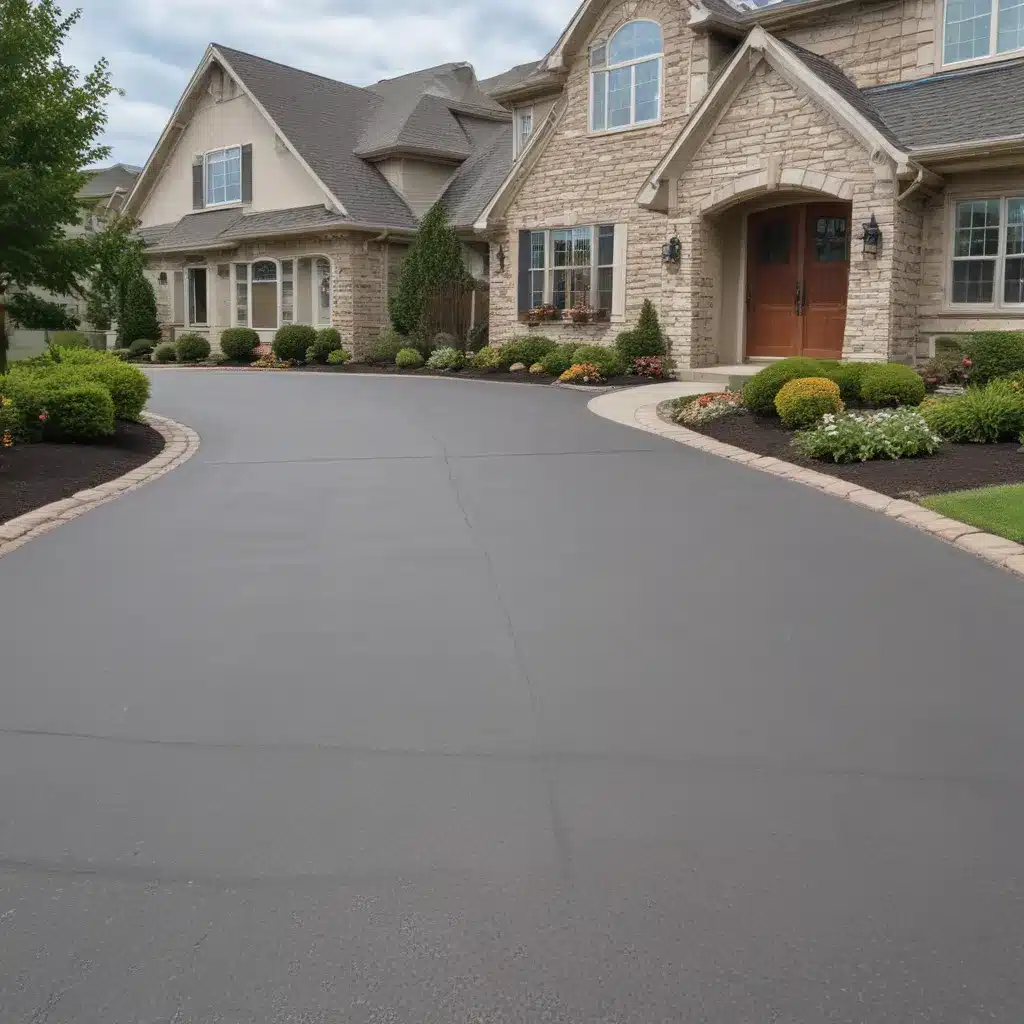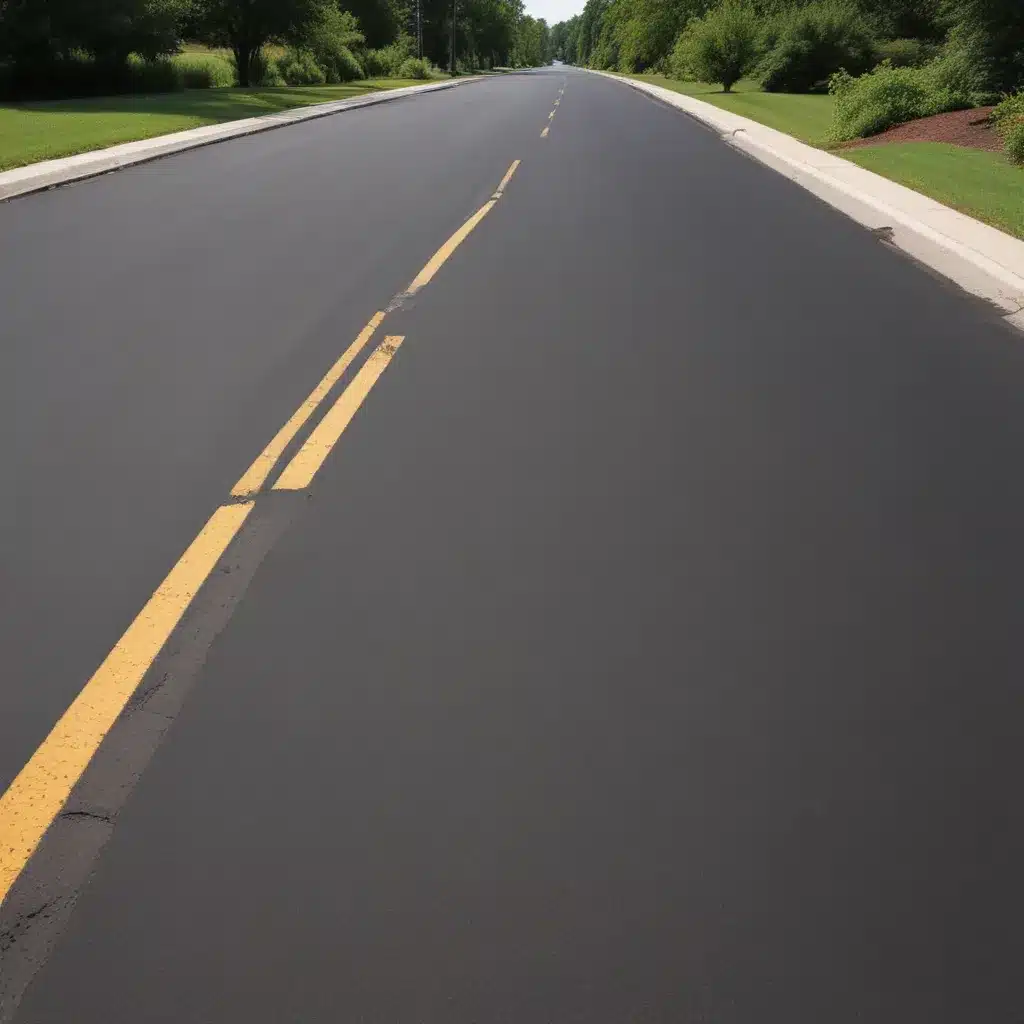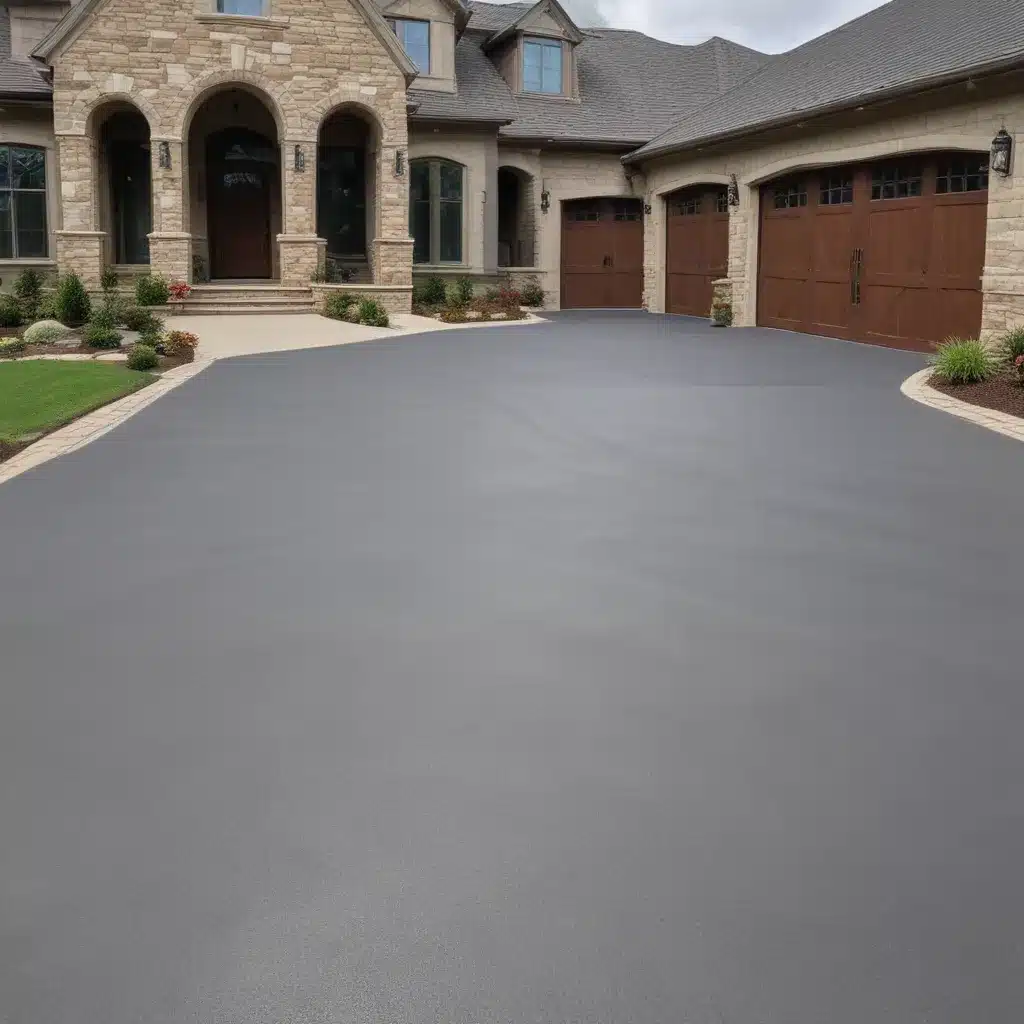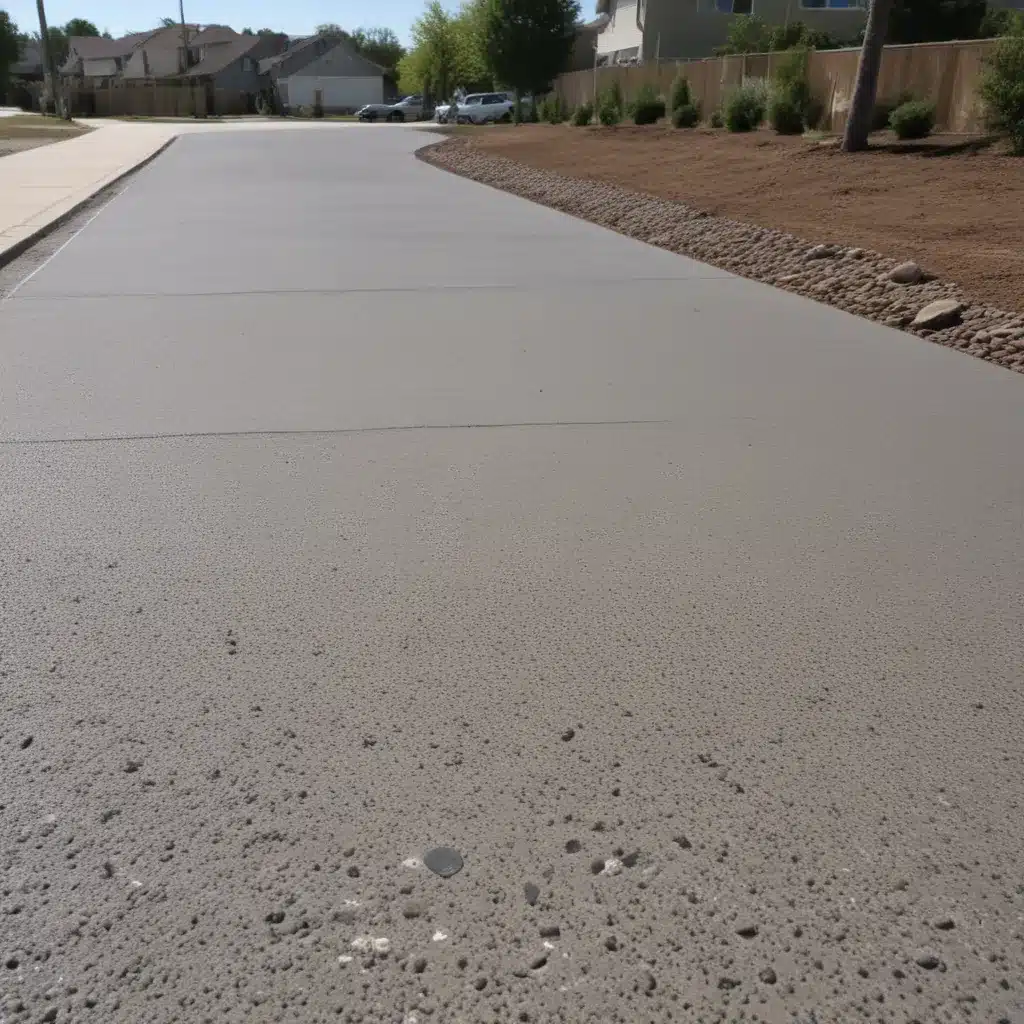Driveway Dilemmas and the Curse of the Sunken Slab
Have you ever pulled into your driveway, only to feel your car lurch downwards as you hit one of those dreaded low spots? It’s like driving over a pothole the size of the Grand Canyon, am I right? One minute you’re coasting along, the next you’re bracing for impact and hoping your suspension can handle the jolt. Well, my friends, you’re not alone in your driveway drama.
Low spots on driveways are a common frustration for homeowners, and they can be a real pain in the…well, you know. But fear not! Today, I’m going to give you the lowdown (pun intended) on what causes these sunken sections, how to prevent them, and the best ways to tackle the repair process. Get ready to wave goodbye to those unsightly divots and hello to a smooth, level driveway that’ll have your car purring like a content kitty.
The Causes of Driveway Low Spots: Unraveling the Mystery
Alright, let’s start by getting to the root of the problem, shall we? What exactly is causing these pesky low spots to appear in the first place? Well, my friends, it all boils down to a few key culprits:
Settling and Soil Erosion
One of the most common reasons for driveway low spots is good old-fashioned settling and soil erosion. When a driveway is first installed, the soil underneath is compacted to provide a stable foundation. However, over time, that soil can start to shift, settle, and erode, leading to uneven surfaces and those dreaded dips.
Imagine your driveway is like a giant cake, and the soil is the base layer. If that base starts to crumble or sink in certain areas, the top layer (your driveway) is going to follow suit. It’s like trying to balance a heavy book on a wobbly table – it’s just not going to end well.
Tree Roots and Vegetation Growth
Another sneaky cause of driveway low spots? Tree roots and other vegetation growth. As those pesky roots spread out underground, they can disrupt the soil and cause sections of the driveway to sink down. And let’s not forget about those pesky weeds and grass that manage to take root in the cracks and crevices – their growth can also contribute to uneven surfaces.
It’s like a game of driveway tug-of-war, with the plants and roots battling against the stability of your precious pavement. And trust me, the plants always seem to win in the end.
Poor Drainage and Water Damage
Finally, we can’t forget about the role of water in creating those driveway low spots. If your driveway doesn’t have proper drainage or if it’s situated in an area prone to pooling, all that excess moisture can wreak havoc on the soil underneath. It’s like a slow-motion game of “The floor is lava,” with the water gradually eroding the soil and causing sections to sink down.
Imagine trying to build a sandcastle on the beach, but every time the tide comes in, it washes away the foundation. That’s kind of what’s happening with your driveway, except instead of a sandcastle, it’s your car’s suspension taking the hit.
Preventing Driveway Low Spots: Proactive Measures for a Smooth Ride
Okay, now that we know the common culprits behind those pesky driveway low spots, let’s talk about how to prevent them in the first place. After all, an ounce of prevention is worth a pound of…well, concrete repair, am I right?
Proper Soil Preparation and Compaction
The key to avoiding driveway settling and soil erosion is to start with a solid foundation. When your driveway is first installed, make sure the soil is properly prepared and compacted. This means removing any organic matter or debris, and then using heavy machinery to really pack down the earth and create a stable base.
Think of it like building a house – you wouldn’t just start stacking bricks on top of loose dirt, would you? No, you’d lay a sturdy foundation first, and that’s exactly what you need to do for your driveway. Trust me, it’s worth the extra effort upfront to save yourself a world of headache down the road.
Strategizing for Drainage and Water Control
And speaking of headaches, let’s talk about water management. As we mentioned earlier, poor drainage can be a major contributor to driveway low spots. So, when you’re planning your driveway design, make sure to incorporate proper drainage systems, like sloping the surface to direct water away from the pavement, or installing drains and catch basins to collect and divert excess moisture.
It’s kind of like playing a real-life game of Frogger, but instead of hopping across a busy street, you’re guiding water safely away from your driveway. Trust me, it’s a lot less stressful (and a lot less dangerous) than the video game version.
Careful Landscaping and Tree Selection
Last but not least, be mindful of your landscaping choices around the driveway. Opt for shallow-rooted plants and trees that won’t wreak havoc on the soil beneath your pavement. And if you do have larger trees nearby, make sure to regularly monitor their growth and prune any encroaching roots.
It’s like a high-stakes game of “Driveway Tetris,” where you’ve got to carefully arrange your plants and trees to create a harmonious (and low-spot-free) driveway ecosystem. Just remember, the prize at the end isn’t a sweet virtual high-five, but rather a smooth, even driveway that’ll make your car and your wallet equally happy.
Repairing Driveway Low Spots: Restoring Order to the Concrete Chaos
Alright, let’s say you’ve done everything in your power to prevent those driveway low spots, but alas, they’ve still managed to rear their ugly heads. Don’t worry, my friends, all is not lost! There are plenty of effective repair methods to get your driveway back to its former glory.
Mudjacking or Slabjacking
One of the most common and cost-effective driveway low spot repair methods is called mudjacking, or slabjacking. This process involves drilling strategically placed holes in the sunken sections of the driveway and then pumping a thick, cementitious slurry (or “mud”) underneath. The pressure of the slurry lifts the sunken concrete back up to its original level, filling in any voids or gaps in the process.
It’s kind of like giving your driveway a little concrete-powered boost, like putting a big, beefy cushion under a sagging couch. And the best part? Mudjacking is typically much less disruptive and expensive than a full driveway replacement.
Partial Driveway Replacement
If the low spots on your driveway are particularly stubborn or widespread, a partial driveway replacement might be the way to go. This involves tearing up the affected sections and re-pouring new concrete, ensuring a solid, level foundation.
Think of it like a driveway makeover – out with the old, sunken slabs and in with the fresh, new pavement. It’s a bit more labor-intensive and costly than mudjacking, but it can be a great solution for more severe driveway issues.
Overlay or Resurfacing
Another option for repairing driveway low spots is to simply add an overlay or resurfacing material on top of the existing pavement. This can be a great way to smooth out uneven surfaces and create a fresh, new-looking driveway without the need for a complete replacement.
Imagine your driveway is like an old, beat-up pair of shoes – you could either buy a whole new pair, or you could just get them re-soled. The overlay or resurfacing approach is kind of like that re-soling process, giving your driveway a new lease on life without starting from scratch.
Maintaining a Driveway Masterpiece: Ongoing Care for a Smooth Ride
Alright, so you’ve tackled those pesky driveway low spots, either through prevention or repair. But the work doesn’t stop there, my friends. Maintaining a smooth, level driveway is an ongoing process, and it’s one that requires a little bit of TLC on your part.
Regular Inspections and Preventative Maintenance
Just like your car, your driveway needs regular check-ups to ensure everything is running smoothly. Set a calendar reminder to inspect your driveway every few months, looking for any signs of settling, cracking, or vegetation growth that could lead to future low spots.
And don’t forget about preventative maintenance, like sealing cracks, clearing away debris, and addressing any drainage issues before they have a chance to cause real trouble. It’s kind of like getting your oil changed – a little bit of effort now can save you a whole lot of headache (and expense) down the line.
Prompt Repairs and Resurfacing
Speaking of expense, let’s talk about what happens if you do spot those dreaded low spots starting to form again. Don’t wait until the problem has escalated – address it right away with targeted repairs or a full resurfacing, if needed.
Imagine your driveway is like a delicate flower – if you let the weeds and pests take over, it’s going to wither and die. But if you stay on top of the maintenance, trimming back the problem areas and giving it the care it needs, that flower is going to bloom into a beautiful, vibrant masterpiece. The same goes for your driveway – a little bit of vigilance can go a long way in keeping it looking its best.
Embracing the Beauty of a Well-Maintained Driveway
And let’s not forget about the aesthetic benefits of a properly maintained driveway, shall we? When your pavement is smooth, level, and free of unsightly low spots, it can actually enhance the curb appeal of your home. Imagine pulling up to a sleek, seamless driveway that sets the tone for the rest of your property – it’s like the red-carpet entrance for your castle on wheels.
So, don’t just think of driveway maintenance as a necessary chore – embrace it as an opportunity to showcase your commitment to creating a beautiful, welcoming outdoor space. After all, your driveway is the first thing visitors see when they arrive, so why not make it a showstopper?
Conclusion: Smooth Sailing Ahead with Driveway Low Spot Prevention and Repair
Whew, that’s a lot of information to digest, but I hope you’re feeling a little more empowered to tackle those pesky driveway low spots, my friends. Remember, it’s all about being proactive, staying vigilant, and not being afraid to get your hands a little dirty (or, in this case, a little concrete-y).
Whether it’s proper soil preparation, strategic drainage planning, or prompt repair work, the key is to approach your driveway with the same care and attention you’d give to any other important aspect of your home. After all, that pavement is the foundation for your daily comings and goings, so why not make it a source of pride and joy rather than a constant headache?
So, the next time you pull into your driveway and feel that familiar lurch, just remember – you’ve got the power to conquer those low spots, once and for all. And who knows, maybe you’ll even start looking forward to those driveway inspections, like a true pavement-loving superhero. Happy driving, my friends!

